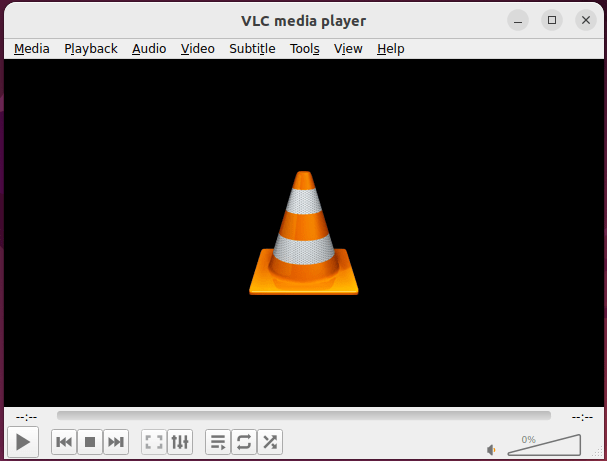How To Install VLC Media Player on Fedora 42

VLC Media Player stands as one of the most versatile and powerful multimedia players available for Linux systems. For Fedora 42 users, having VLC installed opens up a world of multimedia possibilities with support for virtually every audio and video format imaginable. This comprehensive guide walks you through multiple methods to install VLC on your Fedora 42 system, complete with detailed instructions for each approach.
Introduction
Fedora 42 continues the distribution’s tradition of cutting-edge features and robust performance. However, due to Fedora’s commitment to free and open-source software, certain multimedia codecs aren’t included by default. VLC Media Player bridges this gap by supporting nearly all media formats through its comprehensive codec library. Whether you’re a casual user wanting to watch videos or an advanced user needing specialized media features, VLC provides the functionality you need on your Fedora system.
In this guide, we’ll explore multiple installation methods, each with its own advantages. You’ll learn how to install VLC via Fedora repositories, RPM Fusion, and Flatpak. Additionally, we’ll cover essential post-installation configurations, troubleshooting common issues, and tips for optimal performance.
What is VLC Media Player?
VLC Media Player (initially VideoLAN Client) began as a student project at the École Centrale Paris in 1996. Today, it has evolved into a powerful, cross-platform multimedia player maintained by the VideoLAN Project, a team of volunteers dedicated to open-source multimedia solutions.
VLC supports an extensive range of file formats including MP4, MKV, AVI, FLAC, MP3, and many others without requiring additional codec installations. This versatility makes it invaluable for Fedora users who want a hassle-free media experience. Beyond basic playback, VLC offers features like:
- Media conversion capabilities
- Network streaming support
- Video and audio filters
- Hardware acceleration
- Subtitle synchronization and customization
- Playlist management
- Audio visualization effects
What sets VLC apart is its self-contained nature-most codecs are built into the application itself, eliminating the frustrating “codec hunting” experience common with other media players. For Fedora 42 users specifically, VLC provides a consistent multimedia experience across devices.
Prerequisites for Installation
Before installing VLC on your Fedora 42 system, ensure you have the following prerequisites in place:
System Requirements
- A functioning Fedora 42 installation
- At least 150MB of free disk space for VLC and its dependencies
- Admin (sudo) privileges on your system
- Active internet connection for downloading packages
Update Your System
It’s crucial to update your Fedora system before installing new software. This ensures compatibility and prevents potential conflicts. Open your terminal and run:
sudo dnf update
sudo dnf upgradeWait for the update process to complete before proceeding with VLC installation.
Backup Recommendations
While installing VLC itself is generally safe, enabling third-party repositories could affect system stability in rare cases. Consider creating a system snapshot if you’re using Btrfs or a similar file system that supports this feature.
Method 1: Installing VLC from Fedora Repositories
In recent Fedora versions, including Fedora 42, VLC is available directly from the default repositories, making the installation process straightforward.
Installation Steps
- Open your terminal application (Ctrl+Alt+T).
- Run the following command to install VLC:
sudo dnf install vlc- When prompted, enter your password and confirm the installation by typing ‘y’.
- Wait for the installation to complete.
Verification
To verify that VLC was installed correctly, check the version number by running:
vlc --versionThis command should display the VLC version information, confirming successful installation.
Advantages and Limitations
Advantages:
- Simple installation process
- No third-party repositories required
- Official package from Fedora maintainers
Limitations:
- May not include all codecs due to licensing restrictions
- Might not be the latest version available
Method 2: Installing VLC via RPM Fusion
RPM Fusion provides packages that Fedora doesn’t include due to licensing or patent issues. This method ensures you get a fully functional VLC player with all codecs and capabilities enabled.
Enabling RPM Fusion Repositories
- First, enable the RPM Fusion Free repository by running:
sudo dnf install https://download1.rpmfusion.org/free/fedora/rpmfusion-free-release-$(rpm -E %fedora).noarch.rpm- Optionally, enable the Non-Free repository for additional proprietary codecs:
sudo dnf install https://download1.rpmfusion.org/nonfree/fedora/rpmfusion-nonfree-release-$(rpm -E %fedora).noarch.rpmInstalling VLC
After enabling the repositories, install VLC with:
sudo dnf install vlcThe system will download and install VLC along with all necessary dependencies.
Installing Additional Codecs
To ensure maximum media format compatibility, install additional multimedia codecs:
sudo dnf install ffmpeg-freeThis package extends VLC’s capabilities for handling various media formats.
Verification and Troubleshooting
Verify your installation with:
vlc --versionIf you encounter any issues like missing dependencies, try refreshing your repository metadata:
sudo dnf clean all
sudo dnf updateThen attempt the installation again.
Method 3: Installing VLC via Flatpak
Flatpak offers another excellent way to install VLC on Fedora 42. This method provides the advantage of containerized applications, ensuring the latest VLC version regardless of your Fedora release cycle.
Checking Flatpak Installation
Fedora 42 comes with Flatpak pre-installed. Verify this by running:
flatpak --versionIf Flatpak isn’t already installed, add it with:
sudo dnf install flatpakEnabling Flathub Repository
To access the VLC Flatpak, you need to enable the Flathub repository:
sudo flatpak remote-add --if-not-exists flathub https://flathub.org/repo/flathub.flatpakrepoInstalling VLC via Flatpak
Once Flathub is enabled, install VLC with:
flatpak install flathub org.videolan.VLCFollow the prompts to complete the installation.
Handling Disabled Repositories
If you encounter issues with disabled repositories, ensure Flathub is enabled in Software & Updates or with:
flatpak remote-modify --enable flathubBenefits of Flatpak Installation
The Flatpak method offers several advantages:
- Latest VLC version with regular updates
- Containerized installation that doesn’t affect system libraries
- Consistent experience across different Fedora versions
- Automatic sandboxing for improved security
Installing Essential Codecs for VLC
While VLC includes many codecs by default, some proprietary formats may require additional codecs for optimal playback.
Understanding Codec Requirements
Certain formats like H.264, AAC, and some DVD content require additional codec libraries due to licensing restrictions. Installing these enhances VLC’s compatibility with diverse media formats.
Installing Multimedia Codecs via RPM Fusion
If you installed VLC via RPM Fusion or Fedora repositories, add comprehensive codec support with:
sudo dnf groupupdate multimedia --setop="install_weak_deps=False" --exclude=PackageKit-gstreamer-plugin
sudo dnf groupupdate sound-and-videoFFmpeg Installation
FFmpeg provides additional codec support for VLC:
sudo dnf install ffmpeg-freeFor expanded format support, including some proprietary formats (if you’ve enabled RPM Fusion non-free):
sudo dnf install ffmpegTesting Codec Installation
After installing codecs, test VLC with various media formats to ensure proper functionality. If certain formats still don’t play correctly, you may need to install specific codec packages.
Running VLC Media Player for the First Time
After installation, it’s time to launch VLC and configure its initial settings.
GUI Launch Method
To start VLC using the graphical interface:
- Press the Super (Windows) key to open the Activities overview
- Type “vlc” in the search bar
- Click on the VLC icon to launch the application
Command Line Launch
Alternatively, launch VLC from the terminal:
vlcTo play a specific file, specify its path:
vlc /path/to/your/media/file.mp4
First-Run Configuration
When launching VLC for the first time, you’ll need to:
- Accept the Privacy and Network Access Policy
- Click “Continue” to start using VLC
- Choose your preferred interface style if prompted
Configuration and Optimization
Optimize your VLC experience with these essential configurations.
Essential Settings for Performance
Access settings through Tools > Preferences and consider these optimizations:
- Hardware Acceleration: Enable hardware decoding under Input & Codecs to improve playback performance:
- Go to Tools > Preferences > Input & Codecs
- Set “Hardware-accelerated decoding” to “Automatic”
- Cache Adjustment: For smoother streaming:
- Go to Tools > Preferences > Input & Codecs
- Increase the “Network caching” value (1000-2000ms works well)
Interface Customization
Personalize VLC’s appearance:
- Change the interface style under Interface settings
- Adjust toolbar visibility and content
- Enable or disable status bar information
File Associations
Make VLC your default player for media files:
- Go to Tools > Preferences > Interface
- Check “Set media file associations” or configure manually in Fedora’s file associations settings
Troubleshooting Common Installation Issues
Even with clear instructions, you might encounter issues during VLC installation. Here are solutions to common problems.
Repository Connectivity Problems
If you encounter errors connecting to repositories:
- Check your internet connection
- Verify DNS settings
- Try using a different DNF mirror:
sudo nano /etc/dnf/dnf.confAdd:
fastestmirror=true
Dependency Conflicts
For dependency-related errors:
- Update your system:
sudo dnf update - Try installing with
--allowerasingflag:sudo dnf install vlc --allowerasing - Investigate specific conflicting packages mentioned in error messages
Codec-Related Playback Issues
If media files don’t play properly:
- Install additional codecs as described earlier
- Check file integrity with another player
- Try different output modules in VLC settings
Permission and Access Problems
If VLC can’t access certain files or devices:
- Check file permissions with
ls -la - Add your user to relevant groups (audio, video) if needed:
sudo usermod -aG audio,video username - Restart your session for group changes to take effect
Keeping VLC Updated on Fedora 42
Regular updates ensure you have the latest features and security patches.
Updates for Repository Installations
For VLC installed via DNF:
sudo dnf update vlcThis command updates VLC when new versions are available in your enabled repositories.
Updates for Flatpak Installations
If you installed VLC via Flatpak:
flatpak update org.videolan.VLCAlternatively, update all Flatpak applications:
flatpak updateChecking for New Features
VLC’s release notes and documentation provide information about new features in each version. Visit the official VLC website to explore the latest capabilities added to your favorite media player.
Comparison of Installation Methods
Each installation method has its advantages. Consider these factors when choosing your approach:
| Installation Method | Pros | Cons |
|---|---|---|
| Fedora Repositories | Simple, official packages | May lack some codecs, potentially older version |
| RPM Fusion | Complete codec support, well-integrated | Requires third-party repository |
| Flatpak | Latest version, sandboxed, self-contained | Slightly larger disk usage, potential theming inconsistencies |
For most users, the RPM Fusion method provides the best balance of compatibility and integration with Fedora. If you prefer staying on the cutting edge with minimal system impact, Flatpak is an excellent alternative.
Congratulations! You have successfully installed VLC. Thanks for using this tutorial for installing the VLC Media Player on Fedora 42 Linux system. For additional help or useful information, we recommend you check the official VLC website.